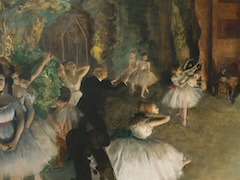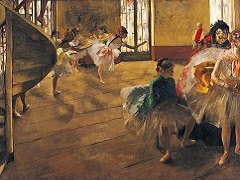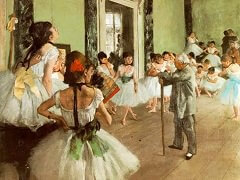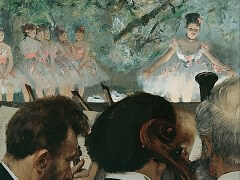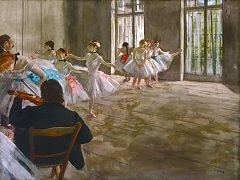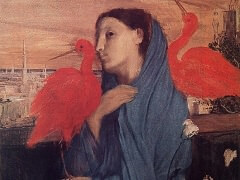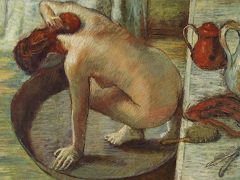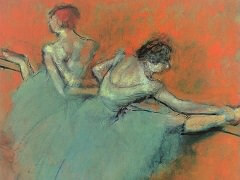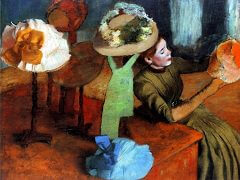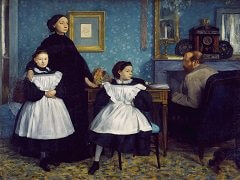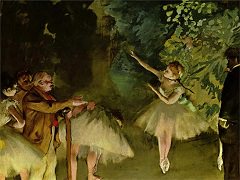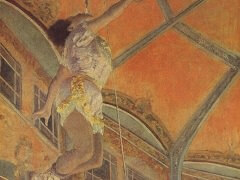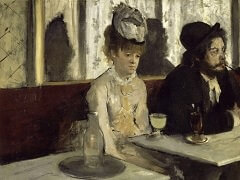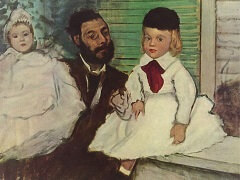Young Spartans Exercising, 1860 by Edgar Degas
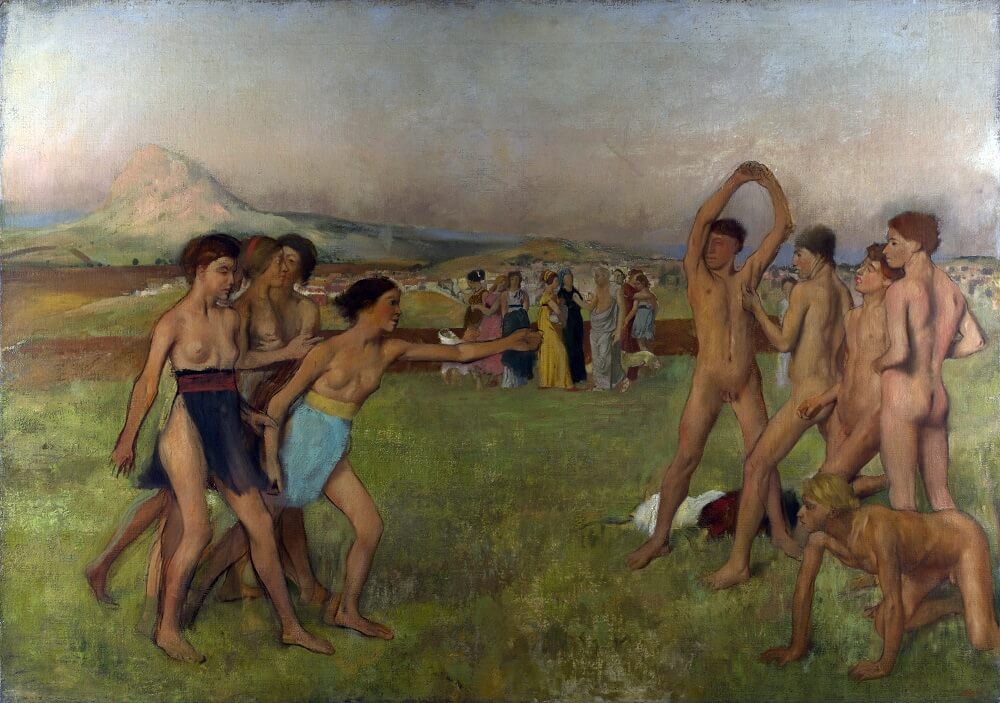
Young Spartans Exercising depicts as its subject matter two groups of youths, four women and five men, with the young women apparently taunting or beckoning the men. The women are positioned to the left of the painting, the men to the right, while in-between the two groups in the background appear a third group watching the youths; their appearance striking as they are fully dressed while the youths in the foreground stand naked or topless. Behind the onlookers, identified as Lycurgus and the youths' mothers, lies the city of Sparta, dominated by Mount Taygetus, from which the bodies of the society's "unfit" children were supposedly thrown into a ravine, to die from trauma or exposure.
The painting was begun in 1860 with Degas returning to the canvas to rework the piece over the following years, though it remained unfinished upon the artist's death. X-rays taken of the work during the early 21st century have revealed that Degas changed the positioning of the youths, their faces, and even their number; this last change resulted in the strange image of the four women in the foreground having ten legs among them. Degas' revisitation of the faces of the youths is often mentioned in art criticism, as it is believed the artist changed the features of the youths from the classic handsome Greek ideal, to a more urban modernistic look. The French art historian Andre Lemoisne, was first to note on this fact, remarking that the subjects had a contemporary Parisian look, more akin to the "gamins of Montmartre". More recent critics agree with Lemoisne, believing Degas was attempting to "update" his painting.

